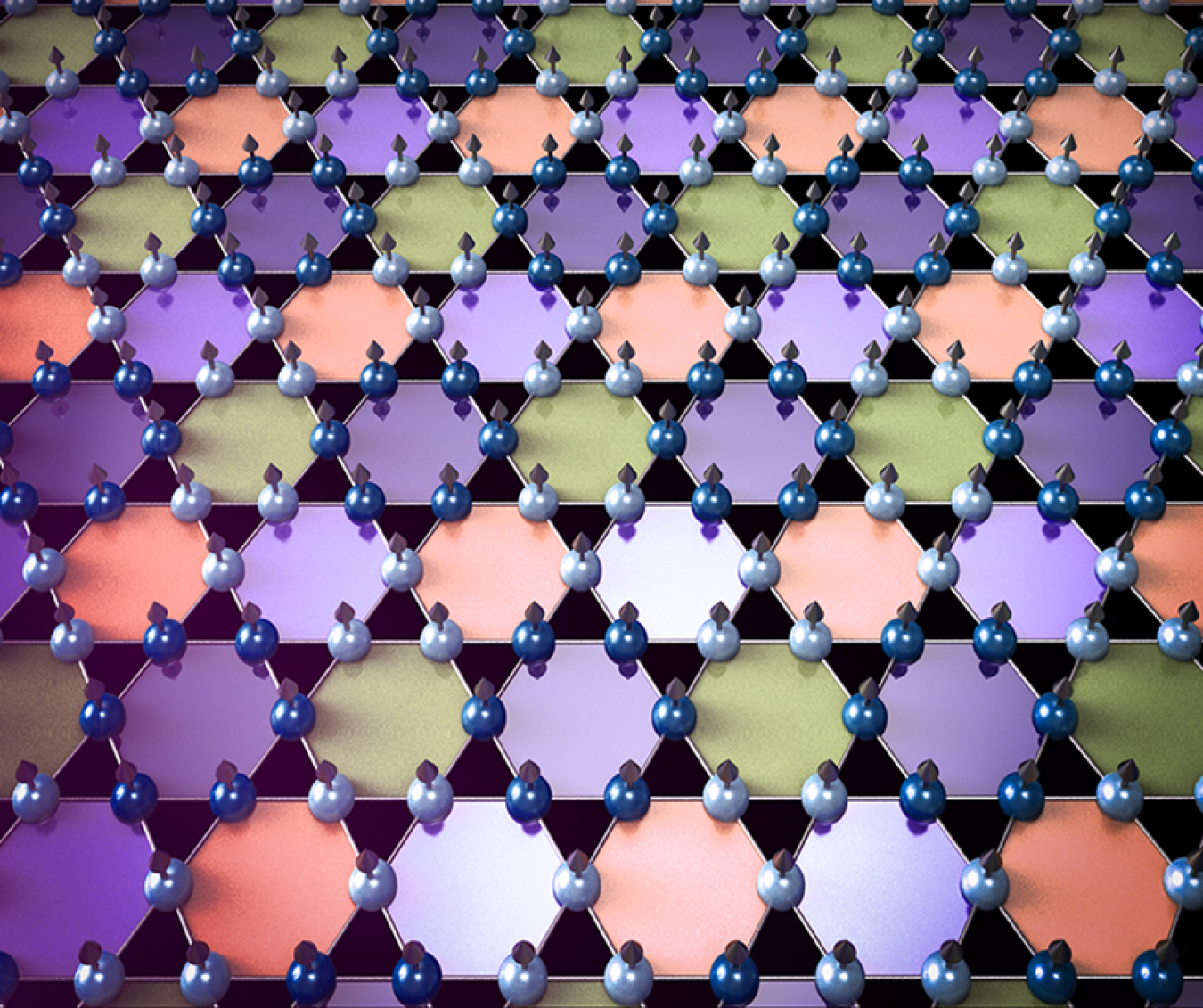An unexpected electron behavior called charge density waves in an iron-germanium metal material presents a new paradigm in emergent quantum phenomena.
June 20, 2025The Science
Quantum materials are substances with unique properties that are made possible by the strange world of quantum mechanics. Scientists studying quantum materials discovered unexpected waves of electronic behavior in a magnetic iron-germanium metal. The atoms in this material are arranged in a kagome lattice, like a traditional Japanese woven bamboo pattern. Periodic wave-like changes in the density of electrons, called charge density waves (CDW), can distort this crystal lattice. The researchers used neutrons to determine that the CDW amplified the material’s magnetism. This causes the material’s electronic behavior to change abruptly. The findings contrast with how CDW manifests in other materials such as the copper oxides that are used to make high temperature superconductors and other electronic devices.
The Impact
Quantum materials exhibit strange and unusual behavior. For example, some quantum solids can behave like liquids. Other quantum materials can exist in different phases—liquid or solid—depending on varying conditions such as temperature or pressure. In these materials, different phases with similar energies often compete for dominance. This can lead to unique and complex electromagnetic effects. Discovering CDW in iron-germanium gives researchers a new view into how quantum materials can produce these sorts of surprise, or emergent, phenomena. The research could help scientists develop quantum materials for next generation technologies such as advanced electronics, superconductivity, and energy storage.
Summary
A hallmark of quantum materials is the coexistence of multiple phases at once wherein each phase competes with the other. As a result, the intertwining phases create bizarre and complex electromagnetic effects that could be harnessed to advance technologies such as quantum computing and other energy-related applications. A team of scientists led by Rice University used neutrons at Oak Ridge National Laboratory (ORNL) to discover the existence of CDW, a quantum effect caused by alternating groups of electrons acting in unison. Neutrons are magnetic, but have no electric charge, making them ideal for studying materials with complex magnetic structures. The scientists used the CORELLI instrument at ORNL’s Spallation Neutron Source, an DOE Office of Science user facility, to determine how CDW was manifesting in the iron-germanium magnetic material. They were able to see how CDW enhances the material’s magnetism and causes the underlying electrons to behave abnormally.
CDW has been observed in materials wherein the magnetic patterns are not consistent throughout the materials’ structures. But this discovery marks the first observation of CDW manifesting deep inside a long-range magnetic ordered phase. Perhaps most importantly, the research provides a new understanding of how quantum effects arise and how to detect them.
Contact
Pengcheng Dai
Rice University
pdai@rice.edu
Feng Ye
Oak Ridge National Laboratory
yef1@ornl.gov
Funding
Sources of funding for this research included the National Science Foundation, the Robert A. Welch Foundation, the Department of Energy (DOE), the Gordon and Betty Moore Foundation’s EPiQS Initiative, the Air Force Office of Scientific Research, the David and Lucile Packard Foundation, and the DOE Office of Science Basic Energy Sciences’ Quantum Materials Program. This research used resources at the Advanced Light Source and the Stanford Synchrotron Radiation Lightsource, both DOE Office of Science user facilities. A portion of this research used resources at the Spallation Neutron Source, another DOE Office of Science user facility.
Publications
Teng, X., et al., Discovery of charge density wave in a kagome lattice antiferromagnet. Nature 609, 490-495 (2022). [DOI: 10.1038/s41586-022-05034-z]
Related Links
Interwoven: Charge and magnetism intertwine in kagome material, Rice University News and Media Relations


